7 Tips for Killer LinkedIn Hooks! 💥
Tired of your LinkedIn posts going unnoticed?

Tired of your LinkedIn posts going unnoticed?
Let’s be honest, on LinkedIn, the hook is everything. You’ve got about three seconds to grab attention before your audience scrolls to the next post. That’s short, right? So you’d better stack the odds in your favor and hook your readers from the very first line! 🏁
Here are 7 unbeatable tips for writing LinkedIn hooks that make people want to click.
And for full training, check out our 6 tips for writing better LinkedIn posts! ✅
A great hook is like the trailer for your LinkedIn post. In just a few lines, it not only needs to grab your reader’s attention but also make them want to find out more.
Your goal?
👀 Catch the eye.
🧐 Spark curiosity.
😍 Create genuine interest in your topic.
To do that, your hook should be short, punchy, and above all, intriguing. It should give a tempting glimpse of what’s coming next — without giving everything away.
Ask a question that makes people think, share a compelling stat, tell a personal story, or drop an inspiring quote that truly resonates. 🔥
The key is to create that little “wow” moment that makes your audience want to keep reading. 🙄
And to help you do that, here are a few proven techniques and variations you can try: 👇
1. A LinkedIn Hook That Hits Hard from the Start 🎯
It’s no secret, first impressions matter. On LinkedIn, your hook should pack a punch that stops the endless scroll.
Start with a simple yet powerful statement that triggers an immediate emotion, something that truly resonates with your audience: surprise, curiosity, even outrage. In short, give them a compelling reason to pause on your post.
Examples:

Once you’ve captured your audience’s attention, don’t let it go. You’ve started with a bold statement, now it’s time to dig into the problem.
Turn up the heat by adding a sharp detail or an intriguing piece of information. The goal is to make your audience want to know more.
Examples:

The best hooks are the ones that say just enough to spark curiosity — but not so much that the reader doesn’t feel the urge to click “See more...”
Make every word count. Less is more, and within three lines, you should have said it all!
Examples:
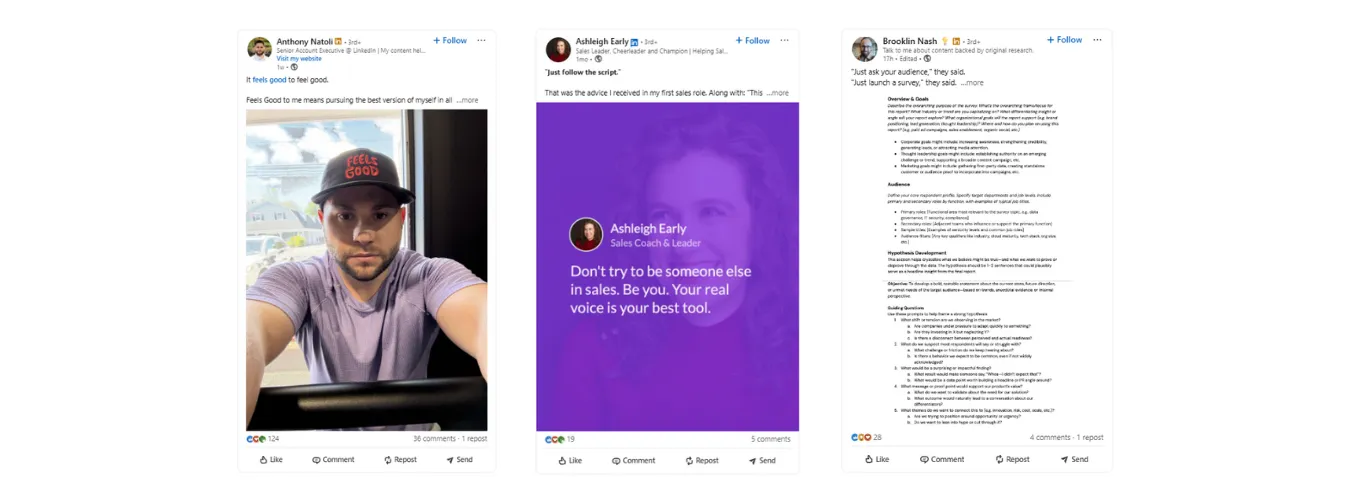
Emotions are a powerful driver on LinkedIn. A hook that strikes an emotional chord, whether positive or negative, is far more likely to generate reactions and engagement. Don’t be afraid to add a bit of yourself to your post.
Examples:
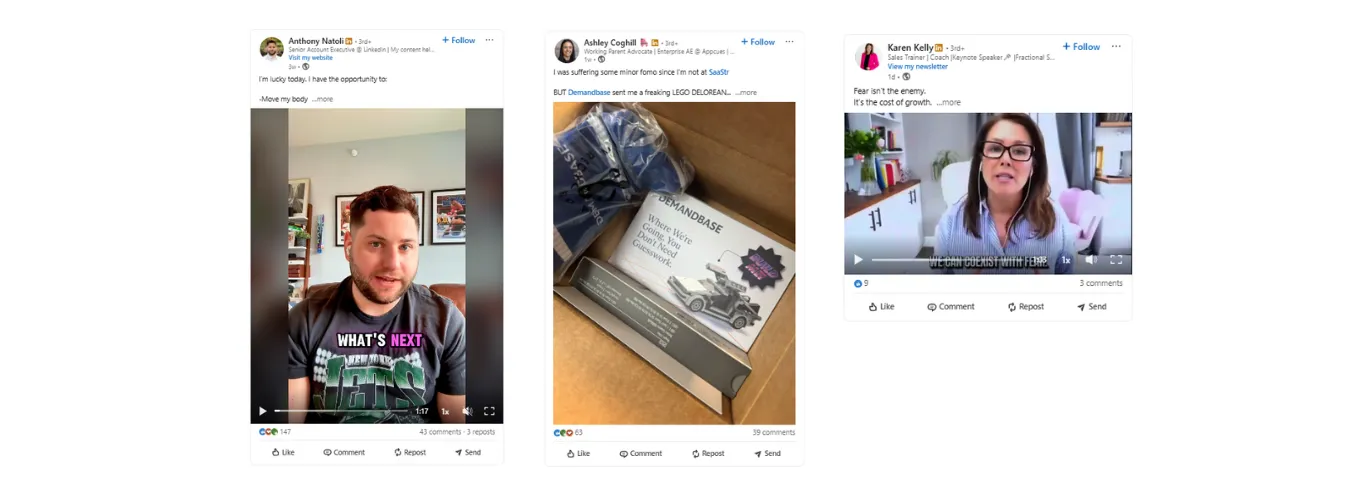
Numbers speak for themselves. A solid statistic or precise data point can turn a simple statement into an irresistible hook.
They give structure to your message and reassure your audience about its credibility. (Pssst... don’t forget to cite your sources!) 😉
Examples:
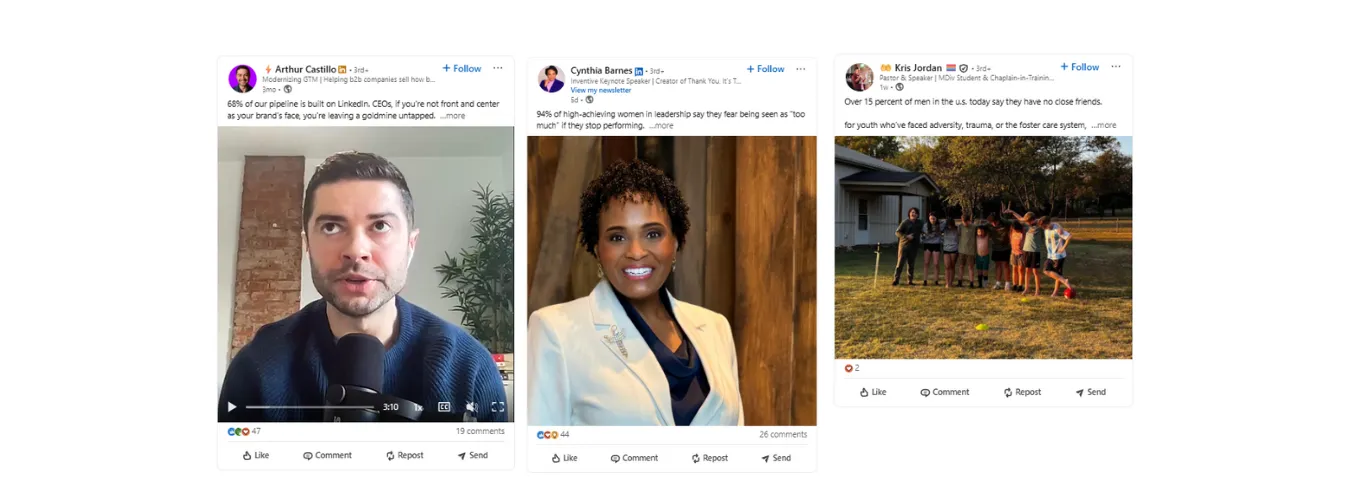
The best-performing LinkedIn posts are often the ones that feel real. Talk about your wins — but also your failures.
Authenticity grabs attention, builds connections, and drives engagement. Show up as your true self, and your audience will follow.
Examples:
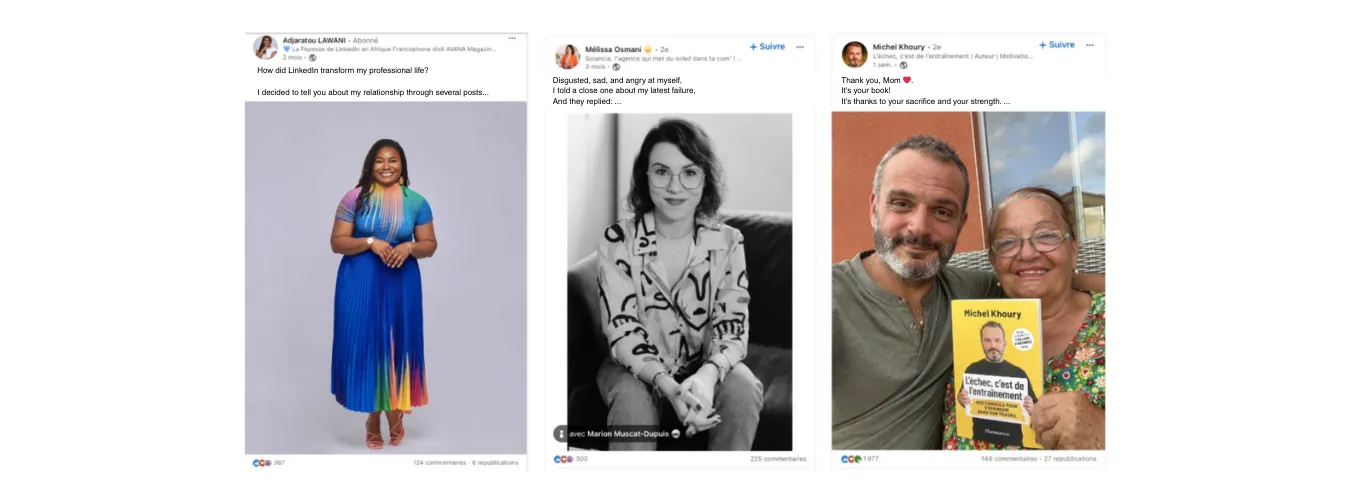
Did your hook hit the mark? Perfect! But don’t stop there. Guide your reader all the way through by giving them a reason to click “See more...”
A strong call-to-click is the icing on the cake — the element that drives action. Be clear, be enticing, and make it impossible to resist!
Examples:
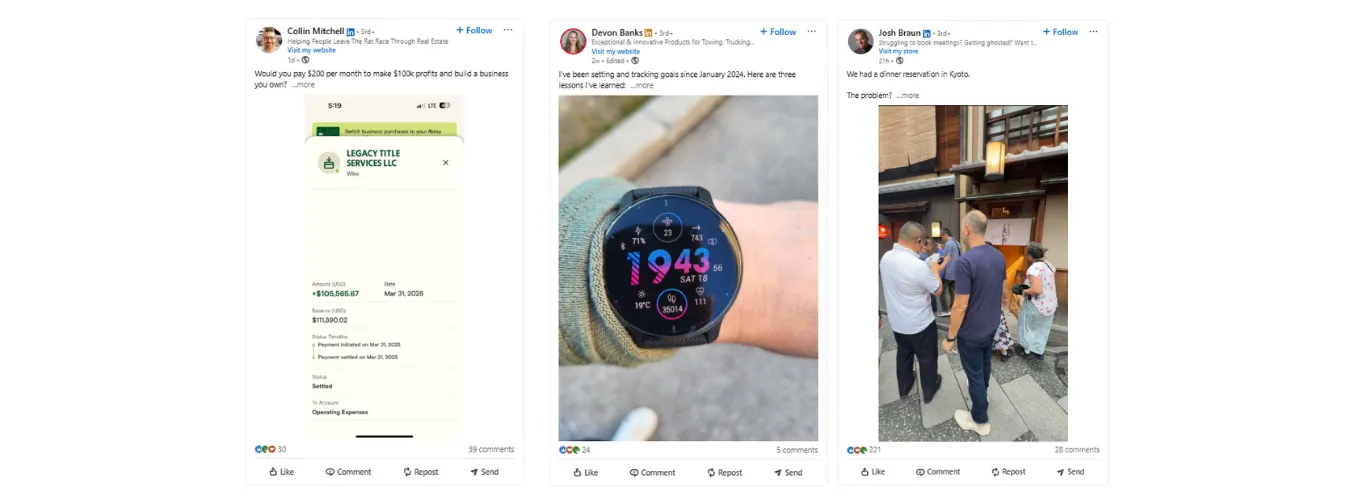
A good hook isn’t just an opening line, it’s the key element that determines your post’s success. By applying these practical tips, you’ll be able to grab your audience’s attention and keep them engaged throughout your content.
Remember: an effective hook gets your readers to click, read, and react. So, ready to craft scroll-stopping hooks that hit the mark? 🚀
To save time while creating posts optimized for LinkedIn, head over to Lyter!
Based on the topic you define, Lyter automatically writes a powerful hook using all these tips. In just a few seconds, you get the perfect result — no more racking your brain for hours trying to find the right opening line.

With Lyter, in under 30 minutes, you get: 👇
💡 LinkedIn post ideas with powerful hooks tailored to your goals.
🔥 One month of personalized posts written in your unique tone of voice.
📆 An editorial calendar with posts scheduled at the best times for your target audience.
So, time to get typing! 📈
It all depends on your audience. If you know it resonates with your readers, go for it — but always stay true to your values and your brand image.
The hook is crucial because it determines whether your audience will read the rest of your post. A strong hook grabs attention and makes people want to learn more.
Again, it all depends on your audience. If it aligns with their expectations and your brand, then you’re on the right track.
The hook is crucial because it determines whether your audience will read the rest of your post. A strong hook grabs attention and makes people want to learn more.
Get inspired by successful posts on LinkedIn, check out curated hook lists, or use proven techniques like asking questions or telling a story.
Not always, but numbers can increase the credibility and impact of your message. Use them when they’re relevant to your content.
Yes, ideally your hook should be concise (one to three lines max) to quickly capture attention on both mobile and desktop.
It might lack punch! Read it again and ask yourself: does it trigger a strong emotion? If not, rework it until it does.
It depends on your audience. If you know it resonates with your readers, go for it, but always stay true to your values and your brand image.
In just 20 minutes, our team will show you how Lyter can free up 7 hours/month.
